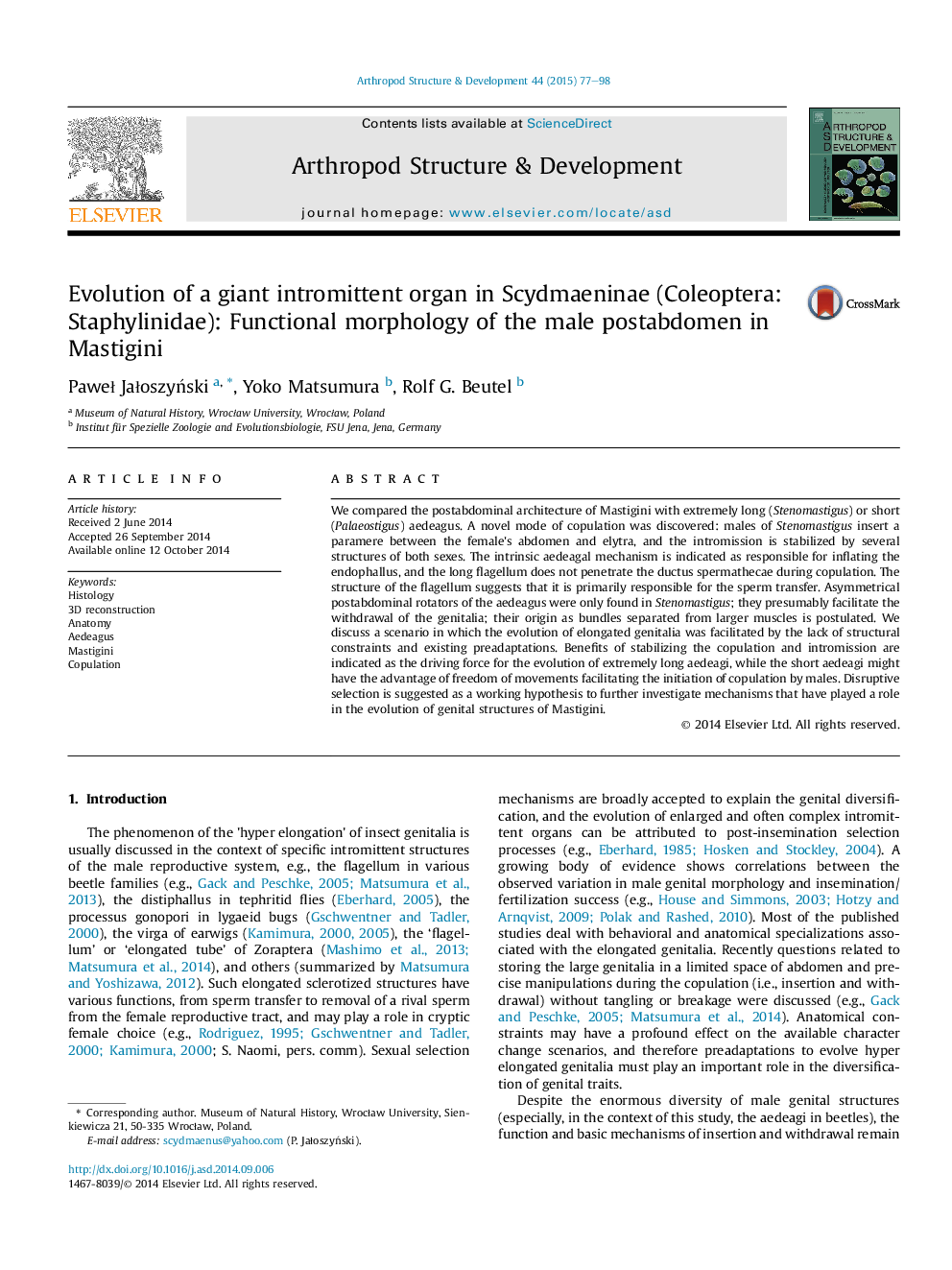| کد مقاله | کد نشریه | سال انتشار | مقاله انگلیسی | نسخه تمام متن |
|---|---|---|---|---|
| 2778528 | 1153141 | 2015 | 22 صفحه PDF | دانلود رایگان |

• Males of Stenomastigus insert paramere between the female's abdomen and elytra.
• Copulation in Stenomastigus is stabilized by several structures of both sexes.
• Long and coiled flagellum in Mastigini does not penetrate ductus spermathecae.
• Only long aedeagi in Mastigini are equipped with asymmetrical muscles.
• Lack of constraints and existing preadaptations facilitated aedeagus elongation.
We compared the postabdominal architecture of Mastigini with extremely long (Stenomastigus) or short (Palaeostigus) aedeagus. A novel mode of copulation was discovered: males of Stenomastigus insert a paramere between the female's abdomen and elytra, and the intromission is stabilized by several structures of both sexes. The intrinsic aedeagal mechanism is indicated as responsible for inflating the endophallus, and the long flagellum does not penetrate the ductus spermathecae during copulation. The structure of the flagellum suggests that it is primarily responsible for the sperm transfer. Asymmetrical postabdominal rotators of the aedeagus were only found in Stenomastigus; they presumably facilitate the withdrawal of the genitalia; their origin as bundles separated from larger muscles is postulated. We discuss a scenario in which the evolution of elongated genitalia was facilitated by the lack of structural constraints and existing preadaptations. Benefits of stabilizing the copulation and intromission are indicated as the driving force for the evolution of extremely long aedeagi, while the short aedeagi might have the advantage of freedom of movements facilitating the initiation of copulation by males. Disruptive selection is suggested as a working hypothesis to further investigate mechanisms that have played a role in the evolution of genital structures of Mastigini.
Journal: Arthropod Structure & Development - Volume 44, Issue 1, January 2015, Pages 77–98